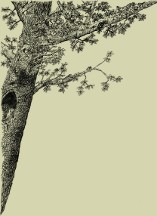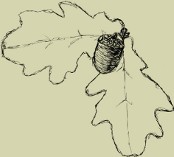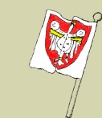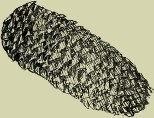42 41 40 39 38 37 36 35 34 33 32 31 30 29 28 27 26 25 24 23 22 21 20 19 18 17 16 15 14 13 12 11 10 9 8 7 6 5 4 3 2 1
Issue 12 (1975)
Studies were carried out in eastern Carpatians and included following tree species: Picea exelsa Link, Pinus cembra L., Abies alba L., Fagus sylvatica L., Quercus petraea Liebl., and Q. robur L.
Numerous regularities are discussed in the paper. The figure presents carotene content in ark of branches and in various age of needles of spruce and fir in relation to the elevation above sea level (in mg/kg of dry matter).
The effect of storage conditions on the quality of technical greenery as a raw-material for the production of fodder was examined. Losses of individual components occurring in the course of storage were quantitatively indicated. Carotene losses are greatest in summer, particularly when greenery is stored while separated from branches.
Raw sulfate turpentine was made by pulp factory Jelenia Góra. Turpentine composition (by GC) was as follows: light fractions 8%, alfa-pinene 48%, beta-pinene 6%, d-carene-3 32%, heavy fractions 6%. Refraction index: 1.470; density 0.862; rotation index + 22.95°.
Terpine hydrate was obtained from pinene fraction by mixing turpentine with sulfuric acid (20% by weight) and toluenesulphonic acids (15% by weight). The mixture was stirred for 75-100 hours. Such procedure enables transformation of both pinenes into more useful compound.
Carene fraction was treated with hydrogen chloride in order to obtain sylvestrene- and dipentene-dihydrochlorides. The procedure gives higher yields than the isomerization of carene fraction in to dipentene or oxidation to alcohols.
Dipentene fraction can be easily transformed into terpine hydrate by sulfuric acid (60%) at temperatures below 0°C.
Crystalline terpine hydrate (m.p. 108-100°C) was dehydrated by authors' own method yielding dl-alfa- as well as trans-beta-terpineol.
The experiments were carried out using 1 litre of raw turpentine. By utilization of all useful compounds the yield exceeding 44% of terpene alcohol was obtained.
Studies carried out in 1967 indicated that preparations Termitox PP-11 (containing oils with 10% addition of polystyrene and 1% — of hexachlorocyclohexane) and Akroksyl 35%, applied at the rate of 200 g/m2, protected hardboards against termites. Fungotox FB-TW, based on fluoroborates, in the form of 5 and 10% aqueous solution and 5% solution of pentachlorophenol with the addition of paraffin emulsion to both preparations mentioned and 1% hexachlorocyclohexane, revealed a similar action for pine and spruce wood. Wood and hardboard samples, which in 1967 were effectively protected against termites, were during 5 years stored in a room with temperature of 20-26°C and relative humidity of air at ca 96% and then exposed again to termite attack. It was found that Termitox PP-11 and Akroksyl 35% failed to protect hardboards in a sufficiently adequate way, while Fungotox FB-TW and pentachloropenol with additional substances mentioned above revealed an unimpaired effectiveness. Tests were run according to the ring technique with the use of Calotermes flavicollis F. on two parallel series of sample protected with mentioned preparations treated and untreated by the process of accelerated aging in Xenotest 150 apparatus. The results obtained indicate the need for further studies on the improvement of processes of accelerated aging to make it meet conditions of natural deterioration of preparations under the impact of climatic factors with definite duration.
As it results from studies, larvae of Leptura rubra L. reveal, when compared with larvae of Hylotrupes bajulus L., by twice lower capacity of adaptation to a new environment. Their mortality resulting hence does not exceed, however, limits precluding their use in experiments on the usefulness of chemical preparations for the control of insects inhabiting wood with considerable moisture content. Such studies may be conducted in a manner similar to that in experiments on the effectiveness of chemical means for the disinfestation of construction wood. While using Leptura rubra L. larvae one should use in experiments 6 blocks (each containing 10 larvae) covered with preparation and 3 comparative blocks. During the time preceding the coating and after it blocks ought to be stored under conditions assuring temperature of ca 22°C and relative air humidity above 95%. As a useful criterion of the usability of chemical preparations for wood disinfestation one should accept a complete mortality of larvae in blocks coated with the tested preparation in the course of definite number of treatments. On the other hand preparations with which the mean mortality of larvae in twice coated blocks will markedly exceed the mean mortality of larvae in comparative blocks, may be considered as revealing features of usability. In such cases further tests aimed at the determination of the number of coatings with which a complete mortality of larvae occurs, ought to be carried out.
In the first part of his paper, the author characterizes foreign trade in wood and wood products in inter-war Poland, presenting the situation in international wood trade at that time, organization of wood export from Poland, the size of this export, its structure and directions, problems connected with railway tariffs and export duties, data concerning the low import of wood to Poland, and the rule of maritime trade in this export and import. In the second part of the paper, the author discuses trade in wood and wood products in People's Poland, describing the organization of export and import, the size structure and directions of this trade.
The final part of the paper contains a general evaluation of foreign trade in wood and wood products in Poland in the inter-war period and at present, and a forecast of future tendencies in wood products trade.
On the background of literature review and standards used in various countries the analysis of techniques of hardness testing in the aspect of their usefulness for wood materials of the type of laminated compressed wood and lignostone was carried out. On the basis of Brinell and Krippel methods 14 variants of the determination of hardness were analyzed, differing in testing instruments, methods of measurement (depth or diameter of impression), various loads, and various diameters of impressed balls.
Tests were carried out on beech laminated compressed wood, prepared especially for this purpose in various construction typed and from veneers with differentiated thickness, as well as on beech lignostone.
Analysis of results confirmed by statistical calculations permits the presentation of following conclusions:
1. Determination of hardness based on the measurement of impression diameter is burdened with a very serious error and should not be recommended.
2. The determination of hardness by impressing a ball with the diameter of 31.831 mm at a constant depth equal to 1 mm or 0.5 mm (depending on the degree of material hardness) is most purpose following to simplicity, high accuracy of results, and at the same time a low variation coefficient.
3. The thickness of specimens tested be equal at least to the tenfold depth of ball impression.
4. Distance between edges of the neighboring impressions interference should amount at least to 2 mm.
Dynamics of lumber air drying was investigated under climatic condition of the Poznań region in the period of 1969-1970.
It was intended to determine the effect of the time of stacking and initial moisture content of sawn material of different thicknesses, on the period needed for attainment of air-dry state. At the same time, it was attempted to determine the uniformity of lumber drying in stacks.
Investigations carried out proved that the thickness of sawn material and the starting date of air seasoning affects essentially the time needed for attainment of lumber air-dry state. Lumber dried in the string-summer period, attained the moisture content of 14-18%, depending on thickness: planks 63 mm thick — at the end of June, boards 42 mm thick — at the end of May, and boards 25 mm thick — at the beginning of May.
It was ascertained that initial moisture content of air-dried material does not influence to a greater degree the time of seasoning.
Mean standard deviation of sampleboard moisture content can be regarded as the fundamental criterion of drying uniformity. The value of this factor in the range of 0.5-1.0% is testifying that the lumber attained moisture content of 14-18%.
Different types of furniture, intended for sitting, are subjected to variable loadings during service, and these are, very often of alternative character. Up to now there is a scarcity of data concerning the behavior of joints in these constructions, glued with various glues, under the influence of mentioned above loadings.
Two kinds of angle joints were investigated viz. stop housed joint and forked tenon joint. Experimental members produced of beech wood under commercial conditions were cold glued with glutin, urea, and polyvinyl acetate glues. These members, after dividing them into groups embracing 20 samples each, were subjected to fluctuating or alternative loads with forces equal to 60% of ultimate force, applied with the speed of 100 mm per minute and frequency of 27 per minute. Number of cycles in loading changes was 800, 1600, and 2400. After this initial changing loading, the ultimate strength and the stress at failure were determined for all samples on the testing machine. On the basis of obtained data, glue line strength was calculated form the formula No. 7 strain in glue line from formulae No. 2-5, and rigidity of joints from formula 6.
Investigation results enabled to draw the following conclusions:
1. Angle joints in furniture members are pointedly more susceptible to alternating loadings with bending forces than to fluctuating loadings.
2. Frequent exposure of furniture members, especially in furniture intended for sitting, to alternative loadings in service, suggests application of this kind of loading when testing furniture members instead of commonly used fluctuating loadings for that purpose.
3. Short-time strength of angle joints glued with different used adhesives was comparable to a great degree. However, under the influence of changing loads, this strength as well as rigidity of joints, are decreasing depending on the kind of used glue. Glutin glue proved the least susceptible while urea glue more and PVC most susceptible to the decrease of mentioned properties.
4. When testing the strength of angle joints it seems justifiable to demand, that the strength of these joints must not decrease below the level of 50% after 2400 cycles of alternating load with the force equal to 60% of ultimate force, applied with speed of 100 mm per minute and frequency of about 30 per minute. In the carried out tests this demand was met only by joint glued with glutin glue.
Requirements imposed on modern furniture concerning adequate strength and rigidity with most economic use of material, make it necessary to carry out proper calculation in designing furniture angle joints. Not much is known, for example, about:
1. real glue line strength in joints,
2. amount of tangential stresses due to shearing force occurring when angle joints are subjected to bending moments,
3. value of compressive stresses occurring in angle joints loaded with bending moment.
In order to elucidate the first of mentioned problems, the glue line strength in block samples cut out from stop housed joints was compared with glue line strength in similar samples cut out from special two-layer constructions glued with the same adhesive. Glue line strength of joints attained only 30-50% of glue line strength of two-layer construction.
To explain the second problem, the strength of angle joints was compared with the strength of end forked joints free from the action of shearing force. Insignificant differences were found and this lead to conclusion that in case of the action of bending forces on relatively long arm of the joint, characteristic for furniture frame structures, the effect of shearing force can be safely disregarded in calculating.
Relating the third problem, the strength of while tenon angle joints as compared with the strength of involved glue line strength. Differences amounting to 50-60% were attributed to the positive effect of compressive stresses. In forked joints these differences were insignificant, which is proving that the effect of compressive stresses on the strength of these joints is of little importance.
On the basis of research data concerning the relationship between surface structure geometry and friction forces, a device was developed for measuring surface roughness of coatings on wood, suitable for the application under commercial conditions. The device proved useful and was duly patented. The device structure and operation principles are based on the following assumptions:
— friction force is recorded at the moment of kinetic friction transition into static friction,
— roughness of the friction shoe is so selected that the friction force is dependent exclusively on the roughness of investigated surface with total climination of adhesion effect,
— unit pressure of the friction shoe is insignificant,
— the rate of friction shoe movement across investigated surface is low, practically eliminating the effect of movable system inertia.
The technical usefulness of the device was tested on lacquer coats most frequently used in apparatus produces by C. Zeiss (new Schmaltz surface analyzer) was used.
The following conclusions were made on the bases of test results and their analysis:
1. The friction force is the function of the height of irregularities of lacquer coating surfaces.
2. Measuring precision of the device based on friction forces is dependent on the height of surface irregularities, and is confined in the range of 0.5-20%.
3. The device is useful for the assessment of lacquer coating roughness under commercial conditions because of the ease and rapidity of measurement possibility of roughness measurement directly on the item produced, simplicity of device construction, and its low cost.
There exists a strict relationship between the duration of wood soaking with various solutions and the rate of gas and solution flow through the longitudinal section f wood, determined as wood permeability. Permeability of wood depends primarily upon its species.
Within a species it depends upon whether it is heartwood or sapwood. Only sapwood may be considered permeable. Permeability of sapwood depends upon the diameter and quality of conductive elements and the presence of thyllae. The presence of a considerable number of thyllae makes wood hardly permeable. The permeability of wood for aqueous solutions increases along with the increase in its dampness. Steaming of beech wood results in a considerable increase in its permeability fort the aqueous solution of dye. Treatment of steaming facilitates also the adsorption of particles from the solution through wood tissue.
The experiments were carried on with the phenol-formaldehyde resin Alpit deviced by prof. T. Perkitny with his team as a glue for waterproof plywood production.
Substances modifying properties of the Alpit were used in a mixture with resorcin, paraformaldehyde and a filler. The shear strength of glue welds has been accepted as a criterion for the appraisal of applicability of these substances in gluing at a lowered temperature of resin hardening from 145 to 120°C and with the reduction in drying time from 24 h down to 60 and 30 minutes.
The impact of modifying substances on the process of Alpit resin hardening was examined with the aid of absorption spectrum analysis in infra-red.
The substances used indicated their impact upon Alpit resin hardening process and enabled the reduction in both hardening temperature and the duration of glue mass drying on veneer surface.















 Download PDF
Download PDF